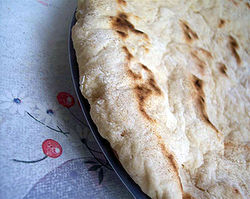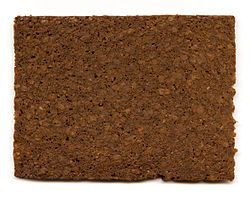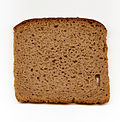
This is a list of sourdough breads. Sourdough is prepared through the fermentation of dough using naturally occurring lactobacilli and yeast. The lactic acid produced by the lactobacilli imbues it with a more sour taste, as well as extending its shelf life compared to other breads. [a] [2] [3] Sourdough baking has a devoted community today. Many devotees share starters and tips via the Internet, [4] and hobbyists often proudly share their work on social media. [5] [6]










